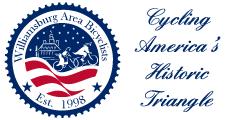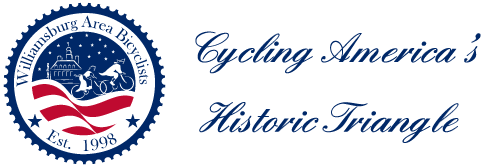The following “Group Riding Practices” document was compiled to help members new to group riding. However, it is also beneficial for veteran group riders to review and serve as a refresher. If you have any suggestions or additions to this list please add your comments below.
We follow these commonly accepted practices on WAB club rides.
Pre-Ride Brief
The Ride Leader brief sets expectations for the group, including most importantly safety considerations. All riders should arrive early enough to hear the brief, and give full attention to that briefing as it impacts all the riders.
Pace-lining
As the paces increase, there is more benefit to drafting, and thus pace-lining is more prevalent. The lower pace groups (C and D) tend to be less structured as it relates to pace-lining and drafting. Either way, drafting in a pace-line reduces the effort required to maintain a speed over a distance as compared to riding alone.
The Ride Leader will often set the tone - either by example or through verbal pre-ride comments.
Rotating off the Front
The usual rotation sequence is to rotate off the left and drift to the back. The length of time or distance one is expected to “pull” on the front is not strict. Often the Ride Leader will establish some rough guidelines as to the distance or time to pull, but it is always fine to pull less than suggested, or even to simply rotate back and not pull at all.
When you decide to rotate back, select your time to rotate carefully - wait until there are no cars coming either from the back or front and you are on a straight-away.
Signal your intention to rotate off. While WAB has not adopted a specific hand signal for this, it is common to fist bump on the right hip. You can always call out your intentions, such as “I’m pulling out” or “I’m rotating back” after you clear yourself.
When you rotate off, don’t slow down THEN rotate off. Instead, keep your speed constant and drift out to the left, then ease off to the back.
Starting out from a Stop
If you are leading when the group is starting from a stop, or after a sharp turn, soft pedal until you determine that everyone has joined the back of the pace-line. Riders near the back should call out “All On” when everyone has joined.
If you are the first one to lead when the ride starts or after a rest stop, take the first 5-10 minutes at a slower speed to enable warm-up.
Calling out Hazards
Call out and/or point-to hazards such as debris, gravel and potholes. Pass the warning back to those behind you. Riders in the back can rarely hear what riders are saying due to wind and road noise. Relaying the message ensures everyone knows about hazards or road conditions ahead.
Car-back Warnings
If you are near the back of the group, try to keep aware of cars approaching from the back and call out “Car Back”. If the car starts to pass, call out “Passing”. Other riders should pass along these warnings up the line so the front riders know about the traffic approaching.
Pulling Downhill
On a steep downhill, use your best judgment to ensure everyone’s safety. If you are pulling on a more gradual downhill, there is a temptation to coast, but in that case everyone behind you will have to brake, so keep pedaling if you can safely do so. If you are not pulling, give more space between yourself and the person in front of you.
Going Uphill
As a group approaches a climb, there will be a big change in speed, and often shifting of gears. This transition requires anticipation and awareness of the environment. Try anticipating the speed changes. Riders near the front should be mindful of those behind them by staying to the right and making smooth changes in speed. Other riders should anticipate the speed change, shift into an appropriate gear early, and make smooth transitions into the climb, including when standing up to pedal, to avoid impacting the riders behind you.
Pedal Consistently
Try to maintain a fairly consistent pedal stroke. This often means just soft-pedaling rather than coasting. If you pedal/coast/pedal/coast constantly then those behind you have to adjust, causing a spring coil effect that undermines the benefits of the group ride. This is particularly true in a pace-line where the benefit of the draft requires riding fairly close to the rider in front of you. This can be both annoying and un-safe.
Ride Predictably
Avoid sudden movements, instead being smooth and maintaining a steady line. Try to look out ahead and spot upcoming road hazards far enough in advance that you can adjust your line gradually.
Announce Your Intentions
If you are coming up alongside another rider, announce “On Your Left” or “On Your Right” with enough time to avoid surprising them. If the group in front is slowing or stopping, announce accordingly. If a turn is approaching, use a hand signal, or announce “Right Turn” or “Left Turn”, or both.
Don’t Overlap Wheels
Avoid overlapping your front wheel with the rear wheel of the rider in front of you. If that person makes a sudden movement and clips your wheel, you WILL go down.
Don’t Ride Too Close
While drafting requires riding fairly close to the rider in front of you, don’t ride too close. Riding too close may make the cyclist in front of you uncomfortable and will often require you to pedal/coast, which may irritate the cyclist behind you,
Don’t Blind the Cyclist in Front of You
Many cyclists wear mirrors that allow them to look behind them (for traffic, to ensure the group is “all on,” etc.). A mirror is most important when a group is approaching a left turn on a multi-lane road, and the lead rider needs to see if traffic is approaching from the rear. If practical, do not draft the lead cyclist by riding slightly to their left. If you can see yourself in their mirror, you may be blinding them.
Ride Single File
Most of the time, ride single file to the right unless on a quiet road or trail with clear visibility of traffic. Definitely single-up when approaching a curve. If you’re the left-most rider, assume responsibility for moving toward single file, meaning pulling ahead or falling back into the line. This is most important while riding on the trail.
Staying Together
In the ideal scenario, the entire group stays together for the ride. However, this doesn’t always happen. Often one or more riders may “fall off the back” either due to a hill or because the pace is too high for them. In the former case (hill), it is generally accepted that everyone will go up the hill at their own pace, and then re-group at the top. Guidance in these situations usually comes from the Ride Leader. In the latter case (pace too high) this is also a judgment the Ride Leader will probably make. If the pace is tending to be above the advertised pace of the ride, then the leader may ask the person pulling to take it down a notch. If you are pulling, you should try to maintain an awareness of the others and defer to the Ride Leader for guidance. In some cases, the leader may designate re-group points depending upon the route. In any case, generally participants are not dropped without making some accommodation, as we do not want anyone riding alone, as it undermines the purpose of the group ride. In some cases, with Ride Leader awareness, a rider can “fall back” and rejoin with another group on the same route. However, not all rides have this option available, so communicating with the Ride Leader is essential.
Crossing Intersections
When arriving at an intersection take care to assess the safety of crossing. If in any doubt, stop completely. If there are cars approaching from either direction, call out “Car Left” or “Car Right”. When you have determined it is safe to cross, you may call out “Rolling”, but avoid calling out “Clear”, since it is the responsibility of every rider to make their own determination when it is safe for them to cross.
Left Turns
When making a left turn, first determine if any cars are coming up from behind. It will be a judgment call based upon the situation to determine when you can safely move to the left to prepare for the left-hand turn. It is often helpful for someone near the back of the group to “Take the Lane” and signal to cars behind that the group is preparing to turn left since it may be easier to assess the traffic situation from the back.
Riding on the Trail
Since so many of our rides traverse a trail such as the Virginia Capital Trail, it it worth reinforcing some special trail considerations. When other riders are approaching the group from the front, call out “Rider Up” so everyone knows to stay single file. When coming up upon slower cyclists or pedestrians, use caution to pass them on the left. Call out “On Your Left” and ascertain that they heard you prior to passing. They may be wearing headphones obstructing their hearing. As mentioned above, you should normally ride single file on the trail but especially single up when encountering others or on curves where visibility is limited. Finally, call out the posts that exist on bridges and at intersections.


I appreciate this information.
I can add a couple observations and comments;
- a week ago in a paceline the rider in front of me decided to drink. One hand off the handlebar at high speed and changing his speed. A better practice is to drink as you rotate off and or at the back. If you fumble a bottle in the center of a group bad things can happen.
- a couple weeks ago a "B" ride leader disagreed with the "rotate left and drift back" rule. I had mentioned that at a rest stop. The reason given was safety. It is less safe to have a rider rotate to the right in front of a bicycle front wheel or to drift back along the gutter side of the road. When drifting back soft pedal and do it quickly. As the "last man" calls out accelerate and get back in.
- one spring I did a camp with the Detroit based Wolverine club. On a downhill I was reprimanded for slowing down and holding the speed. The correct idea is to maintain the same pedal "effort" you had when on the flat. Get comfortable with the higher speed. If you want to steady your bike squeeze the top tube with your thighs.
- if gaps open don't pass the gapped rider to close solo....pass the gapped rider and settle in front to help pace him/her back to the group. When she/he recovers a little they can help close.
All great input Mike - thanks.